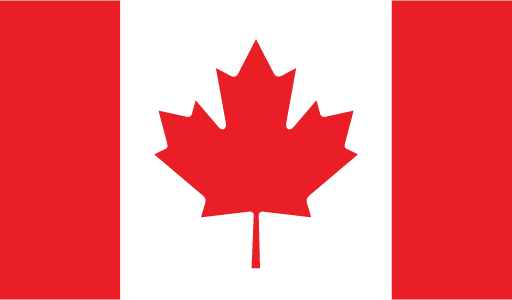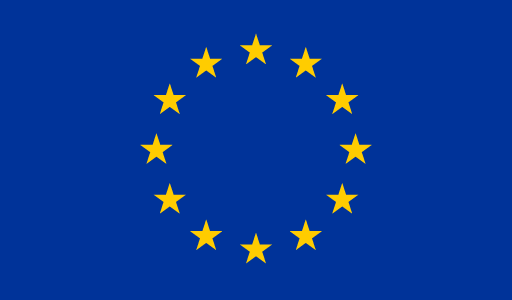DIY Dyed Felt Easter Eggs

Hello! Laura here from @FeltlikeaParty! As of March 1, my home transformed from winter to spring decor faster than you can say, “Is it daylight saving time yet?” As I place bunnies, ducklings, and eggs about, I daydream of longer days, warmer weather, blooming landscapes, and… lower grocery prices. The avian flu has been unkind to all flocks, and for me, a dozen eggs currently cost $7.29 USD. So this year, here’s to one of my favorite felt craft techniques for dyeing eggs on a dime!
Experience level: Beginner and Kid-friendly
Time to make: Quick to make, but allow an interlude for dry time
Supplies for Dyed Eggs:
- Wool Blend Felt in White (one 9" x 12" sheet will work for this)
- Wool Craft Felt in Vanilla (I used the approx. equivalent of four 9" x 12" sheets)
- Water-based Markers (I use Tombow brand)
- Pink 725
- Blue 443
- Yellow 985
- Spray Bottle with water
- Latex gloves (or hypoallergenic alternative)
- Fabric Scissors
- Cutting Machine OR Light Cardstock (to use as a template to trace eggs on felt)
Additional Supplies Per Project:
A. Ombrè Stuffed Eggs:
- DMC Embroidery Floss in Blanc and/or matching to egg color
- Embroidery Needle size 5
- Poly-Fil
B. Gift Tags:
- Heat-transfer Vinyl
- Weeding Tool
- Iron
- Ironing Pad
- Ribbon
C. Vinyl Jelly Bean Holder:
- Clear PVC Vinyl Material
- Gel Pen
- Wonder Clips
- DMC Variegated Embroidery Floss OR, DMC Perle Floss
- Embroidery Needle size 10
D. Garland:
- DMC Perle Floss
- Darner Needle
- Wool Felt Balls
E. Little Egg Pocket::
- DMC Variegated Floss
- Embroidery Needle size 5
F. Egg Wands:
- Wooden Dowel
- Ribbons
- Hot Glue Gun
- Poly-Fil
Dyed Egg Tutorial:
- Cut out egg shapes using a cutting machine, or create a cardstock template and trace it onto felt with a gel pen. I used Vanilla wool-blend craft felt for 5-inch-tall eggs and White wool-blend craft felt for 2.5-inch-tall eggs. Expect your finished eggs to shrink slightly!
- Using water-based markers in the three primary colors (red, blue, yellow) will allow you to create a full blendable rainbow! I opted for a bright pink to be my “red!”

- To create an ombré egg, first divide your egg into 3 horizontal sections. Fully color the top and bottom thirds of the egg.
- Then, divide the uncolored middle section into 3 parts. Lightly color the top and bottom thirds and leave the center space open, or just barely adding gentle strokes of color.

- To make a rainbow, start with your pink (or red). Fully color the top section.
- Next, lightly fill a section with pink, then add yellow to the open spaces in the same area. This will blend into orange!
- Under that, fully color a section yellow.
- Following yellow, blend a section with strokes of yellow and blue. This will become green.
- Then, fill a section with blue.
- Finally, add blended strokes of pink and blue to create purple.

- Experiment! Try using your colors in patterns or stripes, play around with coloring some areas heavier than others. No matter what you do, you will create something unique and amazing!
- If you have more than 3 colors available, let the experimenting continue. Think about which colors would ultimately blend well together— cool colors like green, blue and purple, or warmer tones like red, orange and yellow pair well.
- Don’t forget to share this experience with your young coloring professionals! My boys are 4 and 6-years-old and created all of my 2.5 inch eggs.

- Move to a surface where you can spray your eggs with water. I used my shower floor, but a sink or a plate works too. Even though the markers are water-soluble, avoid spraying or drying your eggs on porous surfaces.
- Wearing gloves is optional for this step. I usually end up with colorful fingertips, but if that’s not your style, now’s the time to put them on!
- Use a spray bottle to mist the entire egg until the colors start to bleed. Too much water can create blank spots or a softer, pastel look—but that can be a cool aesthetic too!
- Move your eggs to your safe surface to dry completely. Please note that your eggs are not colorfast, meaning if they get wet again, the color will change, disperse or disappear.

OK! We dyed our eggs! As you admire your egg-cellent work… now what? Well, I’ve created a few projects to inspire you!
A. Ombrè Stuffed Eggs Tutorial:
- For this project, you’ll need two eggs dyed using the ombré technique from steps 3–4.

- You can choose embroidery floss that matches, contrasts, or even dye your own! As a neon enthusiast, I often dye my own hot pink floss.
- How to dye your own floss — it's easy! Take a length of DMC Blanc and press your marker onto the skein. Pull the entire section of floss from under the marker. For a variegated look, make some areas darker than others. For a bright look, pull it through 2–3 times. For a lighter effect, lightly pull the floss through while leaving some sections white. Just like with the felt, spray with water and watch the marker bleed and dye your thread. Allow it to dry. Remember, this thread is not colorfast.

- Use a blanket stitch with your needle and three strands of floss. Stop stitching to insert poly-fil, then close the egg.

I imagine using these eggs as an indoor rainy day egg hunt, or to string on a garland!
B. Gift Tags Tutorial:
- You will need a cutting machine and heat transfer vinyl for this variation. I used a holographic heat transfer vinyl, or HTV for short.
- Using your cutting machine’s design space, add a name or letter in your desired font. Be sure to size the font according to your egg!
- Cut with the mirror effect on. This will ensure that the design is reversed and appears correctly when applied to the material.
- Cut and weed the surrounding vinyl.

- Before applying the HTV to the felt, iron the felt so it becomes warm. Then, align the HTV and press the iron to the felt for 3-5 seconds. Allow the HTV to cool for a moment until removing the plastic backing.
- You can poke a hole in the top of the egg using an awl or fabric scissors.
- Finally, pull some ribbon through the hole.

What a cute idea for Easter baskets or place cards!
C. Vinyl Jelly Bean Holder
- Unroll some PVC vinyl material and lay a felt egg underneath.
- Using a gel pen, trace the border of the felt egg.
- Cut the traced vinyl egg shape and wipe away any gel pen with a cloth or your finger.

- Place the clear vinyl egg shape on top of the felt egg shape and hold in place with wonderclips.

- Blanket stitch with a full skein of embroidery floss or perle floss. Be sure to leave a section open for filling with sweet treats!

I absolutely love being able to see the dyed egg and the jelly beans at the same time!
D. Garland
- Choose a color palette and size of felt balls that matches your dyed eggs. Have fun laying out a pattern with your eggs, making sure that your final garland is a length that fits your fireplace mantel or desired hanging location.
- Cut a length of perle floss and thread it with a darner needle.

- Sew on your felt balls and eggs, ensuring the floss goes through the top of the egg, with the string visible in either the front or back, depending on your preference.

I love a seasonal garland, especially one that’s handmade by my kids… awesomeness!
E. Little Egg Pocket:
- For this, you will need 2 eggs dyed in a similar hue, or the ombrè technique in initial steps 3-4.
- While I used variegated thread, you can choose a solid color, or dye your own using step 3 in the “Stuffed Egg Tutorial.”

- Using two strands of floss, blanket stitch around the egg, leaving the top third open for a special note—whether monetary or a message of love.

This project can also be no-sew by using hot glue to secure the two eggs together.
F. Egg Wands
- You will need 2 eggs dyed in a similar hue, or the ombrè technique in initial steps 3-4.
- Place an egg dyed side down.

- Add a 1-inch line of hot glue to the base of the egg and place the dowel on top. Ensure that the dowel is positioned near the top of the egg, leaving enough length free for a comfortable grip.
- Now add another line of hot glue starting near the top of the egg, going down over the dowel, and back up to almost the top. Be sure to leave an opening to add poly-fil!
- Lay the other egg shape atop the other and press so that the edges are secure. Allow a moment for the glue to cool and seal, then stuff with poly-fil.
- Once the egg is stuffed, seal off the opening with hot glue.

- Decide which side will be the “front” of the wand, then flip it so the front faces down.
- Add a dot of glue to the dowel and lay a ribbon. Continue for as many ribbons as you want.
- Flip the wand to the designated front side and tie a bow with one ribbon. Secure with hot glue.
- Double knot the remaining ribbons, securing with a dot of hot glue if necessary and cut the ends to a desired length.

This project can be altered to be sewn with a blanket stitch. After step 3, when you glue the dowel in place, you can easily opt to hand sew, stuff, then stitch the egg closed.

Egg-actly the craft for the season! Not only is the process of dying felt fun, you have a new look every time. And the possibilities of what to make are nearly endless—believe me! I hope you try this tutorial and make not only eggs, but awesome memories! And if you come up with another creative use for felt eggs—be sure to let me know on Instagram @FeltLikeAParty!

We hope you enjoyed this tutorial and feel inspired to create your own version of these Dyed Felt Easter Eggs. If you do, we’d love to see your creations! Be sure to share your work on social media and tag both @the_felt_store and Felt Ambassador Laura Zeo of @FeltLikeAParty!, so that we can both admire your amazing handiwork.
Happy Crafting!
 USA
USA CANADA
CANADA EUROPE
EUROPE











Leave a comment